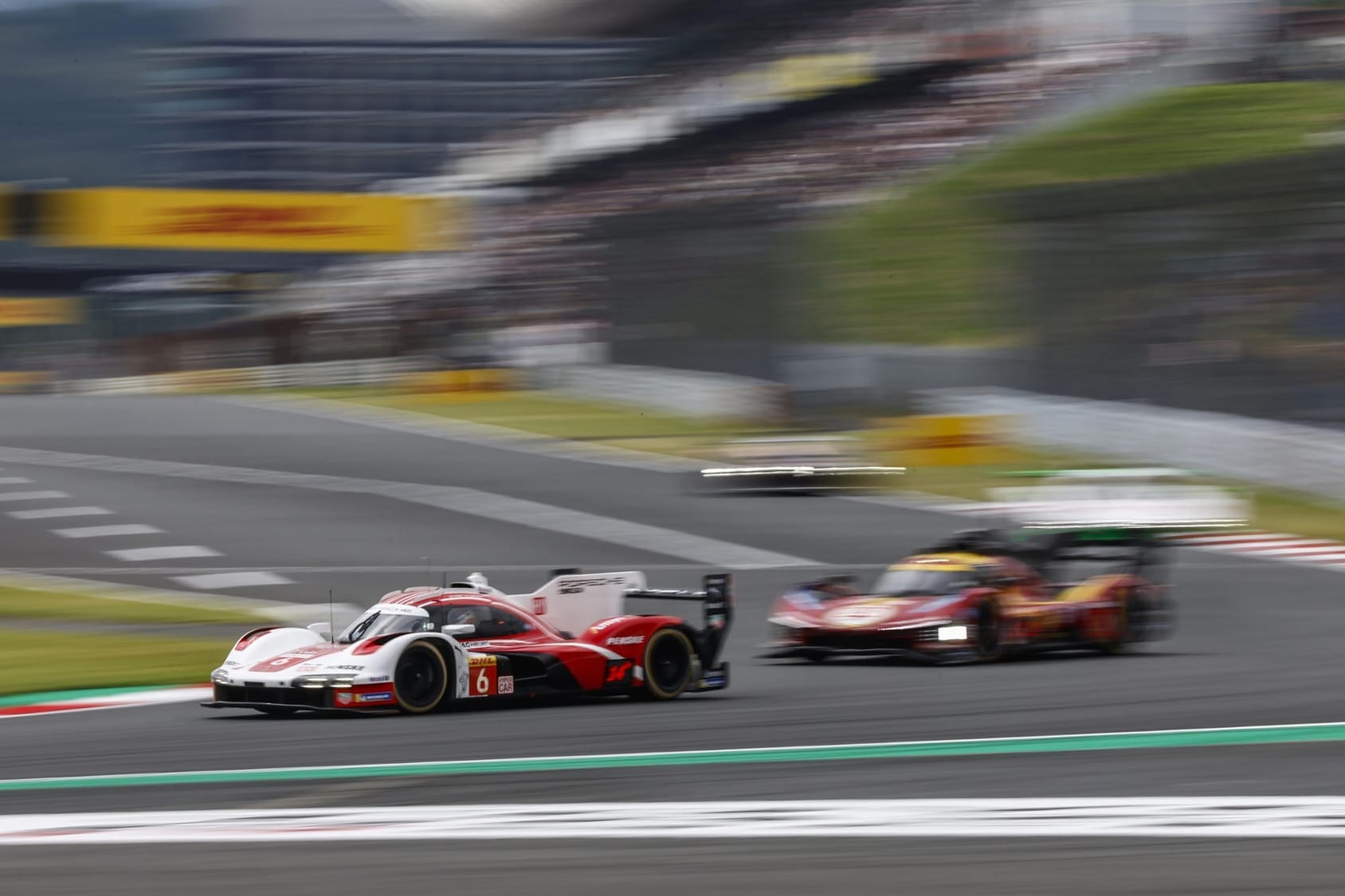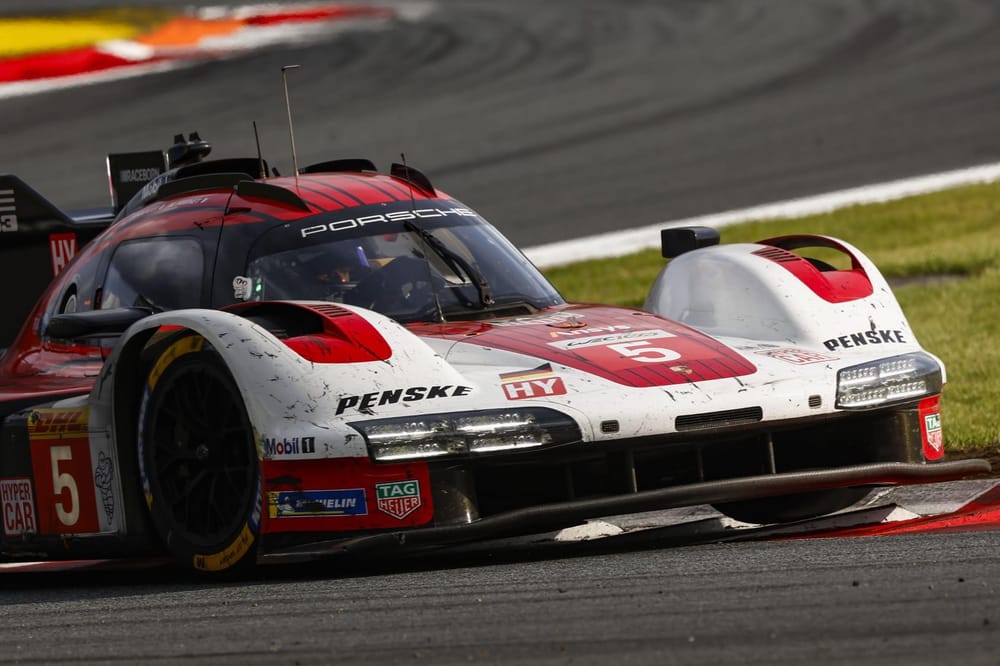The long-feared announcement has finally come, and what The Race suggested could happen in early September has now been made official: Porsche Penske Motorsport will end its World Endurance Championship programme at the end of the current season.
Why such a decision? What will the consequences be for the WEC? And did the Porsche 963 Hypercar achieve its mission? Let’s try to answer these questions.
Porsche's justification
The press release sent to the press on Tuesday afternoon is very brief. It states that as part of its "comprehensive realignment", Porsche AG (the parent company) will in future focus on two factory projects in motorsport: Porsche Motorsport will concentrate on competing with the Porsche 99X Electric in Formula E and with the Porsche 963 in the IMSA SportsCar Championship.
"We very much regret that, due to the current circumstances, we will not be continuing our involvement in the WEC after this season," says Dr Michael Steiner, member of the executive board for development at Porsche.
Comprehensive realignment refers to measures taken due to the financial difficulties the company is facing, issues we detailed a few weeks ago. Macroeconomic and geopolitical headwinds weigh substantially on half-year results.
At the Le Mans 24 Hours, Porsche is in its element. And this race is the last major victory missing from Roger Penske's list of achievements, which has become an obsession for him. This highlights just how complicated the situation is for Porsche.
With Porsche slowing down its electrification efforts in its actual product range, the other question worth asking is: Isn't that in contrast to the realignment in motorsport?
"Our participation in IMSA with the hybrid 963 remains a factory programme, and we will also continue to be active in GT racing," replied Thomas Laudenbach, vice president of Porsche Motorsport.
"Our trio of drive system types therefore also continues in motorsport. Electrification remains a key pillar of Porsche’s powertrain strategy, both on the road and on the racetrack.
"The development progress we’ve seen in the first 11 years of Formula E has been huge: in the inaugural year of 2014, drivers had to change cars halfway through the race because the batteries wouldn’t last a full race distance," Laudenbach added.
"Those days are long gone. Next year, the fourth generation of Formula E cars will arrive – the biggest step in performance yet, with more than 800 PS and lap times likely close to those of Formula 2.
"In short: there is a great deal of technological knowledge currently being gained in electric motorsport, and our electric sports cars for the road benefit from that. We do not want to diminish those gains in knowledge."
Why IMSA rather than the WEC?
Porsche answers this question by stating that with its involvement in the IMSA SportsCar Championship, which features the Daytona 24 Hours as its highlight race, it is underlining the importance of the North American market and endurance racing for the brand. In addition to the two factory commitments in Formula E and IMSA, customer racing remains a pillar of Porsche's motorsport strategy.
China and the United States are Porsche's two most important markets. In China, demand in the premium and luxury segment has fallen sharply. In the US, import tariffs are also putting huge pressure on the automotive industry. And the movement of the dollar could also have an impact. Porsche therefore wants to use IMSA to continue promoting its brand and stem the inevitable decline in sales on the other side of the Atlantic as much as possible.
Don't forget that the project partner, Penske, is also American. And, above all, the IMSA package aligns more closely with Porsche Penske Motorsport's sporting values, thanks to a Balance of Performance (BoP) system that has a less pronounced impact on car performance.
Additionally, without meaning any disrespect to the Aston Martin Valkyrie (the only LMH entry), the fight for outright victory concerns only LMDh cars. And Porsche, as is well known, was the manufacturer most strongly advocating for technical convergence between LMH and LMDh regulations.
The consequences for the WEC

This sad news is a major blow for WEC organisers the Automobile Club de l'Ouest and the FIA, who see a second major manufacturer leaving the grid less than a year after Lamborghini's withdrawal. But this one hurts far more, as Porsche is to endurance racing what Ferrari is to Formula 1.
Holding the record for most victories at the Le Mans 24 Hours with 19 wins, Porsche is one of the WEC's biggest draws. Only Ferrari can claim comparable - or greater - appeal. From a sporting, marketing, and communication standpoint, the end of Porsche's Hypercar programme represents a significant loss for the organisers.
Naturally, this brings back memories of 2000, when the new Porsche prototype was shelved just as testing began, and of 2017, when Porsche ended its LMP1 effort amid the 'dieselgate' scandal. Each time, endurance racing was left in a difficult position.
Today, while this is a major setback, endurance racing is stronger than before. In purely numerical terms, Porsche's departure will be offset by the arrival of Genesis next year, keeping the WEC's top class at eight manufacturers in 2026. But Porsche was one of the 'big three' in Hypercar, alongside Ferrari and Toyota, and the 963 was the most successful LMDh, with four victories to its name.
Sadly, no one can replace Porsche, and nothing will truly fill that void.
What happens to the drivers
As for drivers, Porsche will only need six for its IMSA programme - namely four for the entire season plus two for the Endurance Cup races. Some will inevitably bear the brunt of the WEC programme's discontinuation.
"We are lucky enough to have some of the best sportscar drivers in the world on our roster, and we are fully aware of the situation," Laudenbach said.
"It's too early at this stage to make any concrete statement, but discussions are of course under way. We plan to announce our 2026 line-up around the time of the Porsche Night of Champions in late November.
"At the same time, it is important to remain focused on the current season. We can still win both races and titles at both the final round of the WEC in Bahrain and the IMSA finale at Road Atlanta."
Although not all of them have the same contracts, it is highly likely that reigning world champions Estre and Vanthoor will be transferred to the IMSA programme. Julien Andlauer and Felipe Nasr also have a good chance of continuing.
The situation of Michael Christensen and Nick Tandy is more uncertain. As for Mathieu Jaminet and Matt Campbell, they are being courted by other manufactures. So wouldn't it be a win-win deal to let them go?
The 963's legacy
So far, the highlight of the 963's career is undoubtedly the drivers' world championship title claimed last year by Kévin Estre, André Lotterer, and Laurens Vanthoor. Porsche can also take pride in having earned runner-up honours in the 2024 manufacturers' standings, as well as victories at the Qatar 1812 km and the Fuji 6 Hours, plus a pole position at Le Mans.
This year, in what has been a frustrating season, the Porsche LMDh finished second at Le Mans, before clinching victory at the Lone Star Le Mans at Austin in early September. Next month, at the Bahrain 8 Hours (November 8), the 963 will have a final chance to add to its WEC record. Porsche even remains mathematically in contention for both the manufacturers' and drivers' titles, though winning either would require a Ferrari collapse.
Will private teams run the 963 in 2026? Unfortunately, that seems unlikely. The big disappointment is that, in three Le Mans appearances, the 963 failed to deliver Porsche a 20th victory, and it failed to give Roger Penske the success he has been chasing for so long.
Few Porsches have failed to win at Le Mans. And unless a miracle occurs, the 963 will become the first Porsche since the 908 in 1969 to fall short in its quest for Le Mans glory. It is therefore unlikely to join its predecessors, the 917, 935, 956, 962, 911 GT1 and 919 Hybrid, in the list of winners.
In IMSA, the 963 has the chance this Saturday at Petit Le Mans to retain its manufacturers', teams', and drivers' titles, having already won the Daytona 24 Hours and Sebring 12 Hours earlier this year. In 2026, two cars will continue under the Porsche Penske Motorsport banner, with Proton Competition and JDC-Miller MotorSports potentially fielding two additional entries.
But for European fans, watching them will mean settling for TV coverage only.



